Annual Report 2023





Leprosy Defeated, Lives Transformed.
Following Jesus Christ, The Leprosy Mission seeks to bring about transformation; breaking the chains of leprosy, empowering people to attain healing, dignity and life in all its fullness.

Our
Because we follow Jesus Christ, we value Compassion, Justice, Integrity, Inclusion and Humility.

Leprosy is a disease caused by the bacteria Mycobacterium leprae and Mycobacterium lepromatosis. It is mildly infectious, believed to be transmitted predominantly by droplet infection after being in close proximity with infected individuals for prolonged periods.
The disease does not discriminate between race, age, gender, or nationality. However, it remains most prevalent in the poorest and most marginalised communities in the world where there is high population density, poor nutrition and poor housing.
Fearing stigma and rejection, many people hide the early signs of leprosy rather than seeking medical attention.
Untreated leprosy is the cause of lifechanging disability and severe physical suffering for many hundreds of thousands of people worldwide. The disease damages the skin and nerves which can lead to the inability to feel pain. This often results in injury and chronic ulceration, sometimes forcing amputation. Furthermore, leprosy damages the nerves in the face, causing blindness due to people’s inability to blink.
Contrary to popular belief, leprosy remains a prominent global health issue in the 21st century. Recognised as an official Neglected Tropical Disease (NTD) by the
World Health Organization (WHO), 174,087 new cases were recorded in 2022 in 182 countries, 10,302 of whom were children under the age of 15. This was a 28.3% increase over that in 2021.
Leprosy has been curable with MultiDrug Therapy (MDT) since the early 1980s. MDT (a 6-to-12-month course of various antibiotics) has been administered to over 16 million people affected by leprosy since its introduction. However, millions still live with irreversible impairment and disability. Unsurprisingly, ostracisation and physical impairment are often accompanied by the declining mental health of people affected by leprosy.
It is tragic that a treatable illness can continue to cause such devastation in the modern world. With your support, The Leprosy Mission believes that leprosy, and all the suffering it brings, can be defeated and confined to the history books within our lifetime.



Our sincere thanks to all our wonderful supporters. Thanks to your commitment to our mission, we are able to make a difference to the lives of people affected by leprosy we work with in the Pacific, Asia and Africa.







Requests for further information regarding the Annual Report can be made directly to the
With your support, the Leprosy Mission NZ works in partnership with governments, local communities, partner health organisations, the World Health Organization, and many others. We work in some of the poorest and remote areas in the world to provide and evaluate a range of different projects in 10 key locations in 2023.

New Zealand

Board Chair
Andre Stuart BE
Board
Graham Mills Bcom, CA - Treasurer
Andrew Stott BCom/BA, MBA
Blair Matheson MBA
Jo White BNurs
Rev. Kathleen Gavin Dip Physio, Dip Biblical Studies, Dip Clinical/ Pastoral Counselling
Nadine Rutter BSc
Nicholas Fagerlund LL.B
Executive Director
Gillian Whitley MBS(HR Management), PGDipArts(Psych)
Auditor
Peter Conaglen PP, BMS, Dip Min
Charity Integrity Audit
Hon-Solicitors
Gaze Burt
The Leprosy Mission NZ is part of a Global Fellowship of 29 Leprosy Mission national organisations around the world.
On behalf of the Board it is my privilege and pleasure to present to you the Annual Report for 2023.
With the faith of our Leprosy Mission family of supporters, 2023 saw us continue to support and lead well planned and well delivered programmes to cure, care and restore persons affected by leprosy in various parts of the world.
Isaiah 58:10 “And if you spend yourselves in behalf of the hungry and satisfy the needs of the oppressed, then your light will rise in the darkness, and your night will become like the noonday.” In this scripture I am reminded of the opportunity we have to serve those who need a hand up and this is something that is good for all of us, as it enables us to draw closer to Him.
In this report I would like to take the opportunity to highlight two programmes that TLMNZ is directly involved in that are making a difference. The first is Boungainville Healthy Communities Programme (BHCP), which currently reaches circa 800 communities and continues to find and treat persons affected by leprosy, while also building healthy, resilient and empowered communities. The scale and impact of this programme is significant, it is life changing for people, cost effective and structured to be sustainable in the long term.
The second is in Kiribati, which as a nation has a high prevalence of leprosy. In early 2024, we have signed a memorandum of understanding with the Kiribati Ministry of Health to design a preventative health programme, which builds on our experience and capability developed in Boungainville.
These two programmes are and will be successful because of the strong strategic relationships and the experience of knowing what success looks like. It exciting to be part of such life changing activities.establish our steps towards this.
As a Board, we acknowledge the fantastic work the staff undertake and the excellent leadership of Gillian Whitley. The staff commitment to people whose lives are affected by leprosy, to the strategy of the global leprosy team and to the supporters across Aotearoa New Zealand is incredible. We are fortunate to have such a driven and passionate team.
I would also like to acknowledge all of the Board members who give freely of their time, skills, and enthusiasm in a voluntary capacity. Their guidance supports the Leprosy Mission in achieving our shared vision of Leprosy Defeated, Lives Transformed.
Please enjoy reading through the annual report. Your prayers, gifts and support are touching the lives of people affected by leprosy. It is through God’s love that we are creating a world where leprosy is defeated, and lives are transformed. May God continue to guide us as we do this.

Andre Stuart BOARD CHAIR The Leprosy Mission New Zealand Incorporated


“The thief comes only to steal and kill and destroy; I have come that they may have life, and have it to the full."
John 10:10
"Just as a body, though one, has many parts, but all its many parts form one body, so it is with Christ. For we were all baptized by one Spirit so as to form one body...we were all given the one Spirit to drink. Even so the body is not made up of one part but of many." 1 Corinthians 12:12-14
As we make plans in 2024 to honour 150 years of the Leprosy Mission globally, we give thanks for the countless blessings that have transformed the lives of people affected by leprosy up to now.
Paul speaks in Corinthians of one body with many parts, united by Christ. This is how we have come to see the many equally important parts of the Leprosy Mission.
The Leprosy Mission New Zealand works in partnership across 10 locations delivering a diverse range of activities to reduce the impact of leprosy. From contact tracing, providing the cure, physiotherapy, surgery, ulcer and reaction treatment to counselling and advocacy, educational scholarships, income generation, preventative health and community empowerment and research into reducing leprosy transmission.
For me, at the heart of these activities, are people affected by leprosy. I was truly blessed to have time with our Leprosy Mission teams in India and Papua New Guinea in 2023 and to meet with many people affected by leprosy in their homes and communities.
Two young boys touched my heart, Abeer in India and Henry in Papua New Guinea. They epitomise the need for our audacious goal of No Child With Leprosy by 2035.
Abeer was just starting his journey with leprosy. As a 10-year-old boy, leprosy was already having a significant physical impact on his young body. Thankfully, his father was determined to make the long journey to
ensure Abeer received his monthly supply of the antibiotics that will kill the bacteria in his body. The regular check-ups at the Leprosy Mission Hospital will include physiotherapy and counselling for a holistic approach to healing. I have confidence that Abeer will complete his treatment, that the risk of long-term disability will be reduced and his future will be bright.
What gives me this confidence is being able to meet Henry in Papua New Guinea. I had previously spoken to Henry and his mother when they shared the start of their journey with leprosy. I was delighted to have the opportunity to meet Henry a year later having completed his treatment and see the difference your support makes. He was a stronger, more energetic boy with plans to keep up his education and one day join the Army and look after his community.
As our staff team meet daily to dedicate our work to God in prayer, we give thanks for our faithful supporters, Board and volunteers. for our talented teams around the world, for people affected by leprosy who are determined to overcome this disease, our trusted relationships with MFAT and global partners, and for our faith in our Father the provider - Jehovah Jireh.
With blessings,

Gillian Whitley EXECUTIVE DIRECTOR
The Leprosy Mission New Zealand Incorporated

The Leprosy Mission New Zealand has been creating life-changing connections between New Zealanders and people affected by leprosy throughout the world. We are dedicated to curing, caring for and restoring people, families and communities affected by leprosy.

• Improving health and hygiene knowledge and practices
• Improving water and sanitation facilities and waste management
Finding and Diagnosing:
• Raising awareness of leprosy
• Improving health seeking behaviour
• Strengthening health referral pathways and systems
Being treated:
• Ensuring leprosy assessment available and accessible
• Ensuring Multi-Drug Therapy (MDT) medication given and taken
Breaking transmission:
• Contact tracing of leprosy cases
• Leprosy screening of contacts and preventative MDT treatment

Hospital and Clinic Healthcare:
• Providing reconstructive surgery and ulcer treatment
• Providing counselling and physiotherapy
• Reaction management

human rights
After treatment Care:
• Supplying protective and assistive devices
• Providing self-care training to people affected by leprosy and their families
• Providing follow-up health services
• Advocating for the removal of discriminatory legislation
Restore Sustainable livelihood development:
Towards Zero Transmission Towards Zero Disability Towards Zero Discrimination

• Providing vocational training and employment placement
• Providing business training on income generation activities
• Providing training on saving, loans and seed funding
• Facilitating self-help groups
Breaking stigma:
• Training community leaders and members in advocacy and and human rights.
• Advocating for the removal of discriminatory legislation.

New research by The Leprosy Mission’s team in Bangladesh has revealed that people who share a home with a person affected by leprosy do have only a low risk of contracting the disease, even though their risk is higher than that for other members of their community. The new research will change the way we trace new cases as we work to end the spread of the disease by 2035.
There is not a high chance of catching leprosy, even if it is present in your home
Over the last 20 years, our team in Bangladesh has been collecting information about the contacts of people affected by leprosy through the COCOA (Contact Cohorts Analysis) study. The study reveals that fewer than 2% of people who have lived with a person affected by leprosy will contract this disease.
The research has involved analysis of households of historic cases of leprosy diagnoses in North west Bangladesh, combined with ongoing case finding to see what proportion of people who live in a household with a person affected by leprosy go on to be diagnosed with the disease themselves. The research indicates that it is less than 2% of household members, which is a reminder that there is no need to isolate people affected by leprosy.
A person affected by leprosy who undergoes the correct treatment for leprosy, Multi Drug Therapy (MDT), will stop being infectious within 72
hours of starting treatment and, even before treatment, only a minority of those affected by leprosy are infectious. We already knew that 95% of the world population are naturally immune to the disease and so these latest findings are further evidence that leprosy is a mildly infectious and curable disease.
This data means that we must prioritise homes that have cases of MB leprosy, especially in the first year after the initial diagnosis, when new case detection within the household is at its highest rate.
Our practices in Bangladesh are beginning to change as MB houses receive regular follow up calls from our case workers. These regular follow up calls mean that we can diagnose and treat cases of leprosy at an earlier stage than before, which reduces the chances of transmission within a household or community.
The findings will help us to target the disease better
The COCOA study also confirmed previous evidence, which shows that there is a higher rate of transmission in homes that have cases of MB leprosy. The study provided us with important details as homes with cases of PB leprosy see transmission at a rate of around 4 per 1000 household contacts per year. In households with cases of MB leprosy, this rate rises to around 13 per 1000 per year.
This knowledge is a valuable tool in our fight to end the transmission of leprosy. Before this study was conducted, many case workers would visit as many leprosyaffected homes as possible to check the household members for signs of leprosy, but they were often not clear on which
homes to prioritise. Although priority has always been placed on MB patients, this new data confirms that these household contacts must be prioritised in our contact tracing efforts.
As before, all households with cases of leprosy are taught about how to spot the early signs of leprosy, which include patches of skin that are differently coloured and often have no feeling.
These new practices are another excellent tool for The Leprosy Mission as we continue to work on slowing the rate of transmission of leprosy so that there will be no new child cases by the year 2035.


Leprosy is easily curable. It affects individuals with weakened immune systems. The disease often spreads in areas that are more deprived with poor sanitation and nutrition.
Your support has helped find and diagnose those affected by leprosy, it has helped them start multi-drug-therapy treatment and has ensured they followed this treatment consistently to be fully cured.
• Early detection of leprosy and treatment of new leprosy cases, which helps interrupt the transmission of leprosy.
• Reducing infection risk through Post-Exposure Prophylaxis (PEP), one dose of Rifampicin to people who are close contacts.
• Improving water, sanitation and hygiene to reduce contamination and to prevent secondary infections for people affected by leprosy.
Indonesia has the third highest number of new leprosy cases in the world. Leprosy Mission New Zealand is a supporting partner of NLR - Indonesia to support the PEPCOM project in Indonesia.
The project specifically targets the district of Indramayu - a high leprosy endemic region in West-Java to stop transmission. Through active case finding, new leprosy cases are detected to receive MDT treatment. Their contacts are screened for leprosy and receive MDT treatment or the preventative treatment.
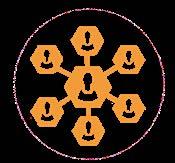
5,425
people identified as close contacts of people diagnosed with leprosy and received one dose of rifampicin in NZ supported projects.

The Bougainville Healthy Communities Programme (BHCP) has a long-standing presence in Bougainville, implementing in Bougainville since early 2000’s, reaching over 800 village communities and covering 95% of the population.
The BHCP model strengthens preventative health through health awareness including water, sanitation and hygiene, identification of leprosy and major illnesses with referral pathways and treatment, immunisation and maternal health. Developing a community of people with a stronger immune system means less vulnerability to leprosy bacteria. The model has a holistic and integrated view of a healthy community being about both health awareness and care as well as effective community-level governance to identify, plan for, and implement, health and development strategies.


people affected by leprosy received multi-drug therapy treatment in NZ supported projects.



new leprosy cases were diagnosed in NZ supported projects.

In Bougainville, Marianne was left for dead by her husband and her neighbours. They said her leprosy was sorcery. Her four children were taken away from her... forbidding her from ever seeing them again. The youngest was just eighteen months.
Thankfully, her story didn't stop there, so much has changed since last year.
Left for dead, Marianne was found by a village health volunteer you support through the Bougainville Healthy Communities Programme (BHCP). Marianne recieved the vital Multi-Drug Therapy and was cured of leprosy.
She also received extra medication to control her leprosy reaction which was causing her unbearable pain and inflammation.
Thank you for sustaining the important Mission work to eradicate leprosy and improving health and life for our Pacific neighbours in Bougainville.
Marianne gradually regained her strength, she could do chores around the house.
Her confidence has restored and she has became a powerful leprosy advocate. She is now using her knowledge about leprosy to spot people affected with leprosy in her village, to make sure they
can receive the much-needed treatment early, and to prevent longterm disability.
With your support, through the Bougainville Healthy Communities Programme, communities are able to learn the cause and consequences of leprosy. There are far fewer people now who believe leprosy is a curse. They are seeing that it is a curable disease.
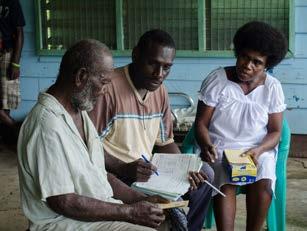
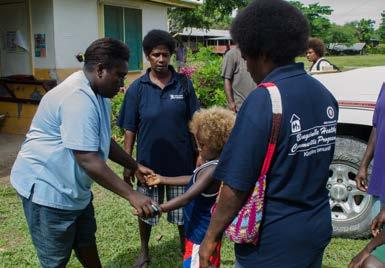
Village Health Volunteers are helping to improve diet and hygiene within the communities. A well-nourished child can better fight off leprosy.
You are an important partner in enabling Bougainville's children to be healthy and with strong immune systems.
Thank you - your kindness and compassion has helped train Village Health Volunteers in Bougainville to find hidden leprosy cases like Marianne's.

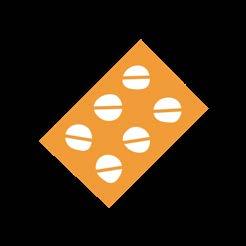
Village Health Volunteers are embedded in their communities, some very remote from heath services.
Each day they walk hand in hand with people affected by leprosy like Marianne on the journey to being cured.

Leprosy is one of the leading cause of preventable disability in the world, and yet disability is not an inevitable consequence of leprosy. That’s why the Leprosy Mission is committed to seeing zero disability because of the disease.
Hospitals that you support provide reconstructive surgery, physiotherapy and ulcer treatment. In our projects, people affected by leprosy are taught selfcare for ulcers to prevent disability and provided with assistive equipment, crutches and wheelchairs as well as prosthetics.

The Leprosy Mission New Zealand is a supporting partner of the Leprosy Mission’s Anandaban Hospital in Kathmandu which provides comprehensive quality care for people affected by leprosy including clinical diagnosis, physiotherapy, ulcer care, surgery, and prosthetics. As a hospital close to local communities, there is provision of general and emergency medical services to the catchment community for fee-paying patients to support long term sustainability.
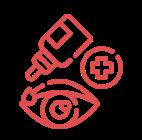
2,427
people received treatment of leprosy-related ophthalmological problems in NZ supported projects.

people received ulcer treatment and reconstructive surgery in NZ supported projects.
Salur Hospital in Andhra Pradesh is a 60-bed facility and one of the 14 hospitals operated by The Leprosy Mission Trust India serving the needs of people affected by leprosy and local communities.
A comprehensive range of in and out-patient care is provided by a dedicated team of medical, nursing and ancillary health specialists including reconstructive surgery, ulcer care and reaction management. Prevention of impairment and disability is addressed through patient education, physiotherapy, pre-fabricated splints and micro-cellular rubber protective footwear.



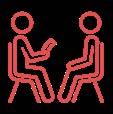
834
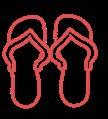
9,634
people received physiotherapy in NZ supported projects.
1,578
pairs of protective sandals were provided in NZ supported projects.

people received counselling or therapy in NZ supported projects.

Shakti was just two years old when leprosy patches appeared on her leg. The patches grew into wounds and became ulcers. Then everyone knew she had leprosy. Her neighbours thought she would infect their children and excluded her.
Nobody would speak to her or touch her. Then, the infection in her leg spread to the bone.
"Sore red patches appeared on my legs. The skin wouldn’t heal and the wounds got bigger. Then they ulcerated," she said.
Shakti worked hard on her school exams and hoped to go to university. She dreamt of becoming a doctor.
But instead, she was at Leprosy Mission’s Anandaban Hospital, recovering from a below-the-knee amputation.
This was the only way to prevent further damaging infections.
Shakti's future looked uncertain, yet thanks to your continued support, Shakti has now been able to receive her joy-giving gift of independence and mobility: a beautiful new prosthetic leg
She is very grateful. 16 year old Shakti can stand and walk again.

“I am really excited to get the prosthetic leg. I am doing my best to prepare my body for it too and the Anandaban staff have all been very helpful."
She adds, “I can't wait to go back home walking on both of my feet and showing it to everyone."
Your compassion for people affected by leprosy has given this young girl a fresh start in life.
Thank you for bringing radical healing and hope to people affected by leprosy, like Shakti.

At Anandaban Hospital, staff make prosthetics, protective footwear and mobility aids. These are crucial to prevent further disability and enable people affected by leprosy like Shakti to regain their independence and dignity to help them walk again.
In the projects you support, people affected by leprosy are restored back to their communities and empowered to challenge injustice and self-advocate for their rights and entitlements.
New Zealand supports livelihoods development in a diverse range of projects. This involves livelihoods training and opportunities for income generating activities, that people affected by leprosy need in order to lift themselves out of poverty and build a better future for themselves and their families.
Together with your support we will see leprosy-affected people enjoy full participation in public, social, economic and cultural life.
As part of the Children Unite for Action programme, the Leprosy Mission assits meeting the educational needs of children and youth in communities affected by leprosy. Over the course of five years, the project will work with 1,200 young boys and girls affected by leprosy & other disabilities and ensure these children have the necessary skills and knowledge to access quality education and attain desired careers.
288 children affected by leprosy received educational support through the grassroot organisation ENAPAL.
3,451
people in self-help groups in New Zealand supported projects.



1,455
people were trained in advocacy , leadership and rights in New Zealand supported projects.
The Preventative Health and Community Empowerment (PHACE) programme worked in partnership with targeted communities to establish collaborative relationships and identify Community Leaders and Village Health Volunteers in 45 communities. The comprehensive training programme for volunteers ensures that health knowledge is embedded at the community level. Learning, sharing and ownership of knowledge empowers community decision-making leading to transformative actions.
The training and intervention activities at the community level has resulted in a greater number of women taking leadership roles. The referral pathways established ensure that people affected by leprosy, vulnerable and marginalized people feel safe and included in their communities and there is an increasing number of suspected cases of leprosy being found through active case finding.

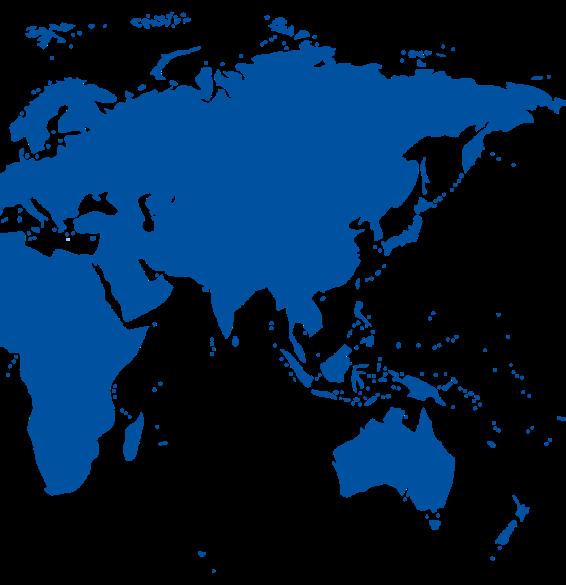
585
people were trained in income generating activities in New Zealand supported projects.



1,500

Village Health Volunteers were trained in Health Development in New Zealand supported projects.
Chittagong People Led Development Programme (CPDP) addresses four diversified needs and aspirations of the people affected with leprosy, disability and other vulnerabilities.

Through Self-Help Groups, people affected by leprosy, disabilities and living in poverty are encouraged to join the group. Group members who are interested in Income Generation Activities receive training through the project and get support to pursue a livelihood activity. The project supports the members with loans for their livelihood activities through a micro-credit system. Apart from the small savings of the members the project provides seed fund for the loans, which they repay and revolves a capital fund for the micro finance.

The journey from leprosy is often a hard road travelled, but thanks to wonderful supporters like you, people like Satendra can be released from the shadows.
Over the past 2 years, we have shared with you Satendra’s Cure One journey.
Thanks to you, Satendra has been cured, cared for and restored from leprosy. His life has been completely transformed!
Satendra’s biggest dream was to set up his own grocery shop.
Your love and compassion helped fund the materials, the building and enough seed finance so Satendra could bike across the border to India to gather initial stock for his dream grocery shop.
Satendra’s shop has been up and running for a few months now and it
Being able to set up a grocery shop not only benefits Satendra and his
family, but also his wider community. Now there is a glint in Satendra’s eyes.
He is able to build a business and a positive future for his extended family. From washing powder, snacks, and hygiene products to other household products...
Satendra’s grocery shop is selling everything that the community needs.
“The shop has allowed me to be independent and stand on my own two feet... it has allowed me to better use my time and energy."
"I am really happy that I can now work for my livelihood and also help my mother and contribute to the family.” Satandra rejoices.
None of this can happen without the kindness and compassion of people like you - thank you!



For I know the plans I have for you,” declares the Lord, “plans to prosper you and not to harm you, plans to give you hope and a future.” Jeremiah 29:11
Anandaban Hospital is the largest hospital in Nepal specialising in leprosy treatment. Its staff team carry out world-leading research to improve understanding of the disease and develop new treatments.
However, due to age and limitations, the facilities are at risk of not meeting standards for diagnostic testing and competitive research despite everything tried via inexpensive short-term fixes and remodelling. A new Research Centre is desperately needed.
The proposal includes 1,100sqm new laboratory and a 500sqm refurbishment in two buildings which will house the Pharmacy and Blood Bank.
Laboratories are often complex buildings, and this building has the additional challenge of being located on a steep slope in an earthquake zone. Terracing, retaining walls and a reinforced concrete
frame structure allow the lab to meet the physical challenges of the site. Other materials include locally sourced brick and stone ensuring the use of local skills and expertise.
The building is also designed to improve thermal comfort, with limited use of air conditioning where this is necessary to meet biosafety or operational requirements.
World-class leprosy research and treatment are carried out at Anandaban, supporting the global fight against this debilitating disease. The new Research Centre will allow its team of scientists and clinicians to operate at their most efficient.
Anandaban’s research work aims to enable organisations and governments to make evidence-based policy decisions for leprosy affected populations worldwide.

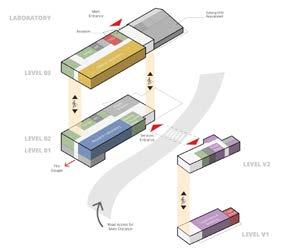

The Board is responsible for preparing financial statements that give a true and fair view of the financial position of The Leprosy Mission New Zealand at the end of a financial year and the operating results for that year. The external auditor is responsible for expressing an opinion on the financial report, based on a review and assessment of the conclusions drawn from evidence obtained during the audit.
The general purpose financial statements set out in this report have been prepared by management in accordance with generally accepted accounting practice under the Financial Reporting Act 2013. The Leprosy Mission New Zealand took early adoption of the NZ International Public Sector Accounting Standards [NZ IPSAS] Tier 2 in 2021. They are based on appropriate accounting policies which have been consistently applied and supported by reasonable judgements and estimates.
The Board retains full and effective control over the society, monitors executive management and ensures that decisions on material matters are in the hands of the Board.
The Audit Committee is composed of members of the Resources Committee. The external auditor has access to this committee and has met with the committee following completion of the audit for the 12 months ended 31 December 2023. Matters considered included a review of the financial statements and accounting policies, the effectiveness of management information and other systems of internal control and the auditor’s findings. The auditor is appointed each year based on recommendations of the audit committee.
To fulfil its responsibilities, management maintains adequate accounting records and a system of internal controls which is monitored periodically. No breakdowns were identified in the systems of internal control for the 12 months ended 31 December 2023. After reviewing internal financial reports and budgets, the Board believe that The Leprosy Mission New Zealand Incorporated will continue to be a going concern in the foreseeable future. For this reason, they continue to adopt the going concern basis in preparing the financial statements.

Leprosy Mission New Zealand
For the year ended 31 December 2023
The Leprosy Mission New Zealand’s vision is leprosy defeated, lives transformed. Our work focuses on the strategic goals of Zero Transmission, Zero Disability and Zero Discrimination.
Bougainville Healthy Communities Programme, Bougainville
Participants in Health Management training 1,409 (842 male and 567 female) 1,202 (728 male and 474 female)
New confirmed leprosy cases 117 (50 male and 67 female) 72 (37 male and 35 female)
Chittagong People-led Development Programme, Bangladesh
Members in Self-Help Groups (SHG)
Participants received income generating support
269 (122 male and 147 female)
149 (53 male and 96 female)
Loans issued to SHG members 1,692 ( 373 male and 1,319 female) 1,645 ( 345 male and 1,300 female)
Preventative Health and Community Empowerment (PHACE) Programme, (former
May 2022 -April 2023 April 2021 - July 2022
Community leaders have attended training on Leadership, Governance (for health) and cross-cutting issues
Community Health Volunteers have recevied training on preventative community health and cross-cutting issues

46 (36 male and 10 female)
91 (44 male and 47 female)
46 (29 male and 17 female)
107 (56 male and 51 female)
FOR THE YEAR ENDED 31 DECEMBER 2023


THE YEAR ENDED 31 DECEMBER 2023

The Leprosy Mission New Zealand Incorporated





FOR THE YEAR ENDED 31 DECEMBER 2023



For the year ended 31 December 2023
The Leprosy Mission New Zealand Incorporated is a charitable organisation, based in Auckland, incorporated under the Charitable Trusts Act 1957 and registered under the Charities Act 2005 as Charities Registration No. CC37638. It provides essential services and support to people experiencing the causes and consequences of leprosy.
Physical address: The Leprosy Mission New Zealand Incorporated 591 Dominion Road, Mount Eden, Auckland 1041.
The current financial statements of the Leprosy Mission New Zealand are for the year ended 31 December 2023. These statements will be authorised for issue after the Board meeting on 15th June 2024.
Statement of Compliance
The general-purpose financial statements have been prepared in accordance with the requirements of the rules of the Society as stated in Section 12 and these comply with the Public Benefit Entity Accounting Standards Framework (Not-For-profit Entities).

The financial statements of the Leprosy Mission New Zealand have been prepared in accordance with Generally Accepted Accounting Practices. [NZ GAAP] They comply with the Public Benefit Entity NZ International Public Sector Accounting Standards [NZ IPSAS], with application of Reduced Disclosure Requirements (RDR), as authorised by the External Reporting Board under the Financial Reporting Act 2013.
Under this framework, The Leprosy Mission New Zealand is classified as a Tier 2 reporting entity. Leprosy Mission New Zealand is a public benefit entity that raises funds together with the NZ Government grants for leprosy related work done overseas
The stated accounting framework and accounting policies set out below have been applied consistently to all periods presented in these financial statements.
The financial statements are presented in New Zealand Dollars (NZD) rounded to the nearest dollar.
The financial statements are prepared on the historical cost basis.
Assets comprise furniture and fixtures, office equipment and vehicles in addition to an interest in the Missions Centre Partnership of which The Leprosy Mission New Zealand owns a 50% share at 591 Dominion Road. Except for interest in the Missions Centre Partnership, all assets have been recorded at cost less accumulated depreciation.
Depreciation is calculated so as to write off the cost of furniture and fixtures, office equipment and vehicles, on a straight-line basis over the expected useful economic lives of the assets concerned.
The estimated useful lives of assets are as follows:
• Computers and software - 3 years
• Furniture and Fixtures 5 years
• Motor vehicles 5 years
The assets’ residual values and useful lives are reviewed, and adjusted if appropriate, at each reporting date.
(i) Leprosy Mission New Zealand endeavours to make available all possible funds for immediate leprosy work. Specific funds are invested so as to only utilise the interest when received.

(ii) Investments are shown in the Statement of Financial Position at the lower of cost or market value.
(iii) The Leprosy Mission New Zealand’s investments comprise cash together with 300 shares in Pacific Gas & Electric Company which were bequeathed to The Leprosy Mission New Zealand by a supporter. The fair value of quoted securities is determined based on bid prices at the balance sheet date. The book value of this investment remains unchanged from 2003. PG&E filed for Chapter 11 on 29 January 2019 and as of 31 December 2022 the last sale listed on the Nasdaq Exchange was USD 18.04 per share. There were no PG&E dividends received in 2023.
(iv) The Leprosy Mission New Zealand has a third share of a 5-share interest in freehold land in the Maori Freehold Land known as Anakiwi No. 10 Block.
Receivables are recognised at the original invoice amount less impairment losses. This balance is made up of a current account balance with The Leprosy Mission International, prepayments and GST.
(e)
Trade and other payables represent liabilities for goods and services provided to The Leprosy Mission New Zealand and which have not been paid at the end of the financial year. Given their short term nature, the carrying values of trade and other payables are considered a reasonable approximation of their fair values.
An accrual for Holiday Pay reflects the balances owing to staff at balance date and is measured at the amounts expected to be paid when the liabilities are settled. Sick leave requests greater than any annual entitlement are considered insignificant and have not been accrued into employee end of year entitlements.
(i) Grants and Donations
Grant and donation income is recognised as income when it becomes receivable unless The Leprosy Mission New Zealand has a liability to repay the grant if the requirement of the grant or donation is not fulfilled. A liability is recognised to the extent that such conditions are unfulfilled at the end of the reporting period.
(ii) Bequests
Bequests are recognised in the statement of Comprehensive Revenue when received.
(iii) Government Grants
Contracts with the Ministry of Foreign Affairs and Trade [MFAT] are based on 3-to-5 -year terms with a schedule of annual payment dates. The contracts have

performance reporting dates along with a financial accountability reporting inclusive of any unspent balance. Formal negotiations take place with the MFAT on any unspent project funds as to repayment, or an application to apply the unspent funds to an extension of the project(s). On this basis, the revenue recognition policy is to treat government contracts as a current liability until the funds are expended on the authorised project, and the administration of the project.
(i) Finance Income (interest and other Income)
Interest is recognised in the statement of comprehensive revenue and expenses as it accrues, using the effective interest method. Dividend income is recognised in the statement of comprehensive revenue and expenses when the right to receive payments is established.
(ii) Sale of books
Revenue from the traded goods and services are recognised when the agreed goods & services have been delivered and the amount of revenue can be reliably measured. At this stage, the benefits of the service and products has been delivered to the respective client.
Currency gains (if any) is recognised as “Other Income” at the end of the financial period.
Grants made for emergency purposes are recognised as expenses when approved and the recipient has met all necessary conditions to be entitled to the payment.
The Leprosy Mission New Zealand is wholly exempt from New Zealand income tax and gift duty having fully complied with all statutory conditions for these exemptions.
The statement of comprehensive revenue and expenses has been prepared so that all components are stated exclusive of GST. All items in the statement of financial position are stated net of GST, with the exception of receivables and payables, which are stated inclusive of GST.

This income is made up of the following.
The total programmes expenditure includes development programmes and humanitarian response activities in 2022 and 2023.
Cash comprises deposits with The Bank of New Zealand.
NZAID grants for 2023 received from MFAT (Ministry of Foreign Affairs and Trade) along with currency gains held over for final remittance totalled $915,995 and will be remitted after balance date.
There have been no material changes in accounting policies by the entity during the period covered by these financial statements. All policies have been applied on a basis consistent with those used in previous year.
13. Related Party Transactions
There were no related party transactions in 2023. Leprosy Mission New Zealand conducts an internal audit every year for the Bougainville

Healthy Communities Programme (BHCP) project. The internal audit comprises a deskaudit followed by a site visit to PNG to complete a full internal audit which is required for reporting to MFAT. Graham Mills CA, a member of The Leprosy Mission NZ Board conducts this audit and paid a fee which is determined and agreed in the BHCP project budget with MFAT. All travel, accommodation and incidentals for the site visit are covered under the agreed budget.
No significant events have occurred since balance date that would require a change to these Financial Statements.
• A reinstatement valuation of the building was prepared by Seagars (Auckland) Ltd in September 2023, and the reinstatement estimated to be $ 3,150,000. We have moved our insurance brokers from Rothbury to Gallagher Insurance Brokers (formerly Crombie Lockwood).

• A valuation from the Auckland City Council web site had the following values. The equity comprises of the following:
These advances are repayable in the event of The Leprosy Mission New Zealand withdrawing from the partnership.
for the year after transfers Prior period adjustment to Funds Committed to Future Remittances
64,208 (1,340,000)
3,000,000

Board Designated Project Funding


To the Board of The Leprosy Mission New Zealand (NZ) for the year ended 31st December 2023
We have audited the financial statements of The Leprosy Mission NZ, which comprises the statement of comprehensive income, the statement of changes in equity, the statement of financial position as at 31 December 2023, the statement of cash flows for the year then ended, and notes 1 to 17 to the financial statements, which include a summary of significant accounting policies.
In our opinion:
• the reported outcomes and outputs, and quantification of the outputs to the extent practicable, in the statement of service performance are suitable,
• the financial statements present fairly, in all material respects, the financial position of The Leprosy Mission NZ as at 31 December 2023 and its financial performance and its cash flows for the year then ended, in accordance with Public Benefit Entity Standards Reduced Disclosure Regime.
We conducted our audit in accordance with International Standards on Auditing (New Zealand)(ISAs (NZ)) and statement of service performance in accordance with the International Standard on Assurance Engagements (NZ) ISAE (NZ) 3000 (Revised).
Our responsibilities under those standards are further described below in the Auditor’s Responsibilities for the Audit of the Financial Statements section of our report. We are independent of The Leprosy Mission in accordance with Professional and Ethical Standard 1 (Revised) Code of Ethics for Assurance Practitioners issued by The New Zealand Auditing and Assurance Standards Board, and we have fulfilled our other ethical responsibilities in accordance with these requirements.
We believe that the audit evidence we have obtained is sufficient and appropriate to provide a basis for our opinion.
Other than in our capacity as auditor we have no other relationship with, or interests in, The Leprosy Mission NZ.
This report is made solely to the Board, as a body, in accordance with section 42F of the Charities Act 2005, the Financial Reporting Act 2013, and their constitution. Our audit work has
been undertaken so that we might state to the Board those matters we are required to state to them in an auditor's report and for no other purpose. To the fullest extent permitted by law, we do not accept or assume responsibility to anyone other than the Board as a body, for our audit work, for this report, or for the opinions we have formed.
The Board is responsible for the preparation and fair presentation of the financial statements in accordance with Public Benefit Entity Standards NZ IPSAS with the Reduced Disclosure Regime, (as issued by the External Report Board (XRB) under the Financial Reporting Act 2013) and for such internal control as the Board determines is necessary to enable the preparation of financial statements that are free from material misstatement, whether due to fraud or error.
In preparing the financial statements, the Board is responsible for assessing the entity's ability to continue as a going concern, disclosing, as applicable, matters relating to going concern and using the going concern basis of accounting unless the Board either intends to liquidate the entity or to cease operations, or has no realistic alternative but to do so.
Our objectives are to obtain reasonable assurance about whether the financial statements as a whole are free from material misstatement, whether due to fraud or error, and to issue an auditor’s report that includes our opinion. Reasonable assurance is a high level of assurance, but is not a guarantee that an audit conducted in accordance with ISAs (NZ) will always detect a material misstatement when it exists. Misstatements can arise from fraud or error and are considered material if, individually or in the aggregate, they could reasonably be expected to influence the economic decisions of users taken on the basis of these financial statements.
A further description of the auditor’s responsibilities for the audit of the financial statements is located at the XRB’s website at https://xrb.govt.nz/Site/Auditing_Assurance_Standards/Current_Standards/Page8.aspx

Director: Peter Conaglen
Chartered Accountants – South Auckland 17th April 2023

While the Leprosy Mission New Zealand holds itself to the highest standards in all activities it undertakes, there may be times when this standard cannot always be achieved or be perceived to be achieved. The Leprosy Mission New Zealand has policies and a Safeguarding Code of Conduct addressing child and vulnerable adult protection. In the event of a complaint being received by the Leprosy Mission New Zealand, we will endeavour to investigate, put things right and learn from the experience.
In the first instance, please contact us:
General concerns: supporterservices@leprosymission.org.nz
Safeguarding concerns: safeguarding@leprosymission.org.nz
Or call Freephone: 0800 862 873 (NZ Only) or +64 9 630 2818
If you have raised a complaint with The Leprosy Mission New Zealand and are not satisfied with the response to that complaint you may contact:
Fundraising Institute of New Zealand, a sector organisation of which The Leprosy Mission New Zealand is a member and which commits to ethical and best practice fundraising.
Website: finz.org.nz
You can also contact Charities Services, part of the Department of Internal Affairs.
Website: charities.govt.nz
The Council for International Development (CID), the national umbrella agency for NZ organisations working in International Development.
Website: cid.org.nz
We would like to acknowledge and thank our partners who joined us in our goal of No Child with Leprosy by 2035.

















